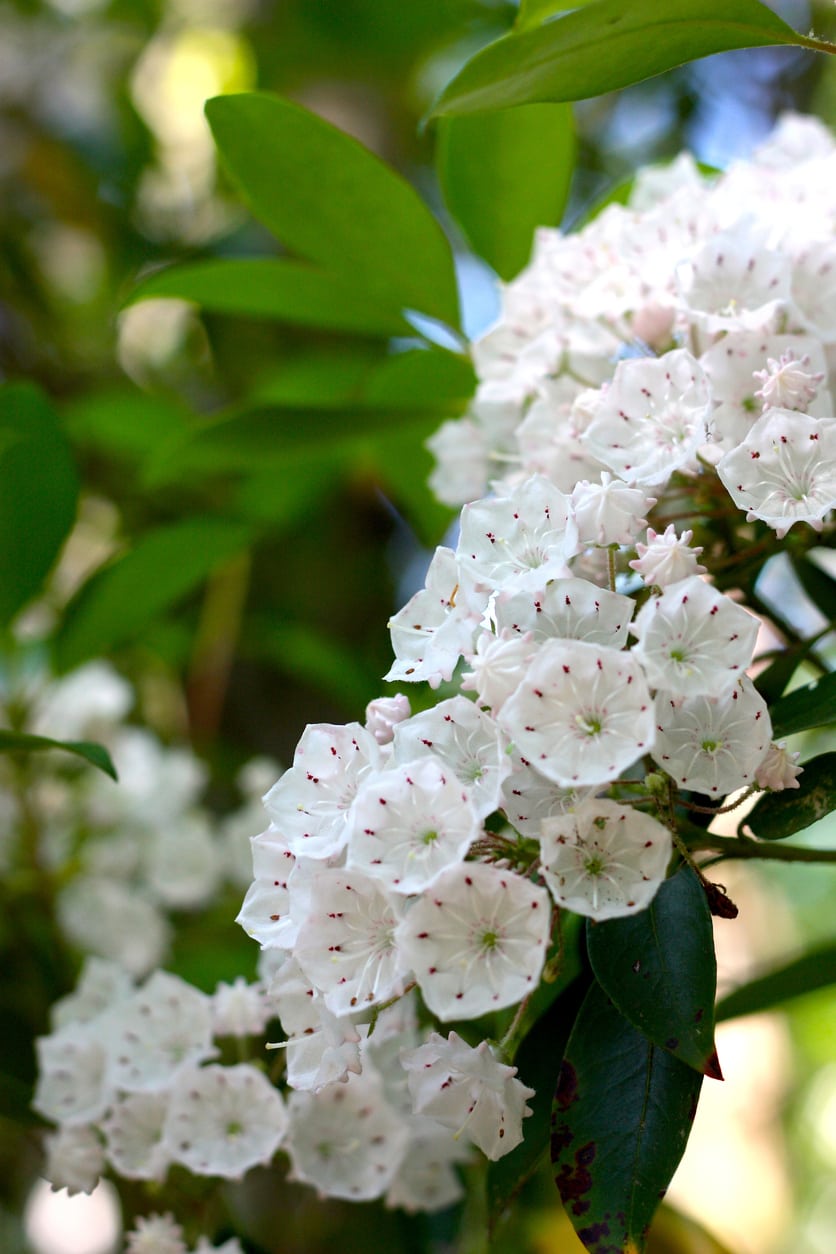Mountain Laurel Fertilizer Guide: When To Feed Mountain Laurels


Mountain laurel (Kalmia latifolia) is a lush evergreen shrub with stunning flowers. It’s native to the eastern half of the country and, as a native, is an easy-care plant to invite into your yard in mild regions. Although these are native shrubs, some gardeners feel that they grow better if you fertilize them. If you’d like to know how to fertilize mountain laurels or what to use for mountain laurel fertilizer, read on.
Feeding a Mountain Laurel
Mountain laurels are broad-leafed evergreens that grow in the wild as multi-stemmed shrubs. The leaves, like holly leaves, are shiny and dark. And the branches of mature laurels are delightfully gnarled. Mountain laurel produces flowers in late spring or summer. The blooms range from white to red and are an essential part of the woodlands in the East. They grow in zones 4 to 9, and look beautiful cultivated with rhododendrons or azaleas. Is feeding a mountain laurel essential to its growth? Although the species grows just fine in the wild without care, fertilizing mountain laurel cultivars may promote thicker growth and healthier leaves. But you must not feed these plants too often or too much.
How to Fertilize Mountain Laurels
Some gardeners don’t fertilize their mountain laurels because these native plants grow well on their own. Others give the shrubs mountain laurel fertilizer for that extra little push. If you are wondering how to fertilize mountain laurels, the answer is to do it lightly once a year. As to what fertilizer, select a granular product for acid-loving plants and scatter a handful or two on the soil near the plant.
When to Feed Mountain Laurels
If you are thinking of feeding a mountain laurel, the “when” is just as important as the “how.” So the next question is: when to feed mountain laurels? Do the deed in late fall or early spring. When you are feeding a mountain laurel, remember to feed the plants sparingly. Be sure not to let the mountain laurel fertilizer touch the foliage or stems. While some gardeners also use liquid fertilizer every six weeks during growing season, it isn’t really necessary. According to other experts, fertilizing a mountain laurel after June causes abundant foliage growth at the price of blooms.
Sign up for the Gardening Know How newsletter today and receive a free copy of our e-book "How to Grow Delicious Tomatoes".

Teo Spengler is a master gardener and a docent at the San Francisco Botanical Garden, where she hosts public tours. She has studied horticulture and written about nature, trees, plants, and gardening for more than two decades, following a career as an attorney and legal writer. Her extended family includes some 30 houseplants and hundreds of outdoor plants, including 250 trees, which are her main passion. Spengler currently splits her life between San Francisco and the French Basque Country, though she was raised in Alaska, giving her experience of gardening in a range of climates.